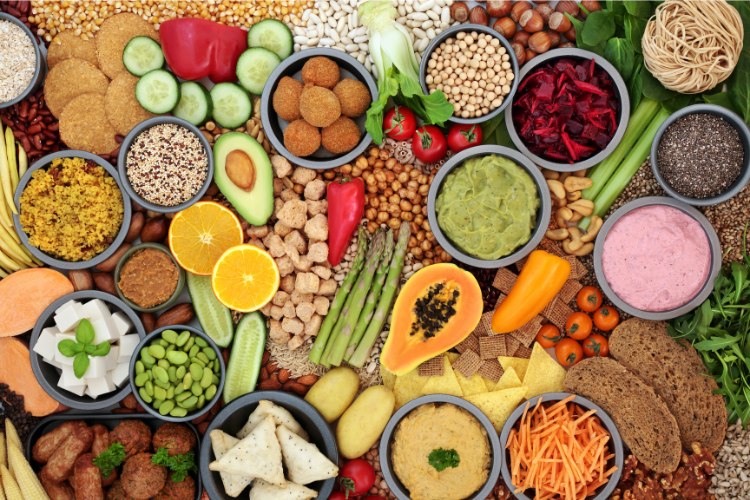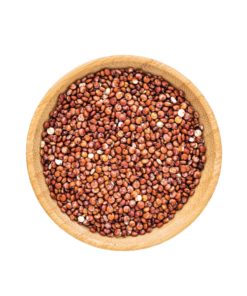Blog
Animal Proteins vs. Plant-Based Proteins
Animal vs. plant-based proteins?
Protein is a cornerstone of human nutrition, playing a crucial role in building, repairing, and maintaining tissues. Whether you’re aiming to build muscle, support recovery, or maintain overall health, understanding the differences between animal and plant-based proteins can help you make informed dietary choices. Let’s break it down with science.
1. What is Protein?
Proteins are macronutrients made up of smaller building blocks called amino acids. They’re essential for numerous bodily functions, from enzyme production to muscle repair, immune support, and hormone regulation. Out of the 20 amino acids, nine are essential (histidine, isoleucine, leucine, lysine, methionine, phenylalanine, threonine, tryptophan, and valine), meaning they must be obtained through your diet because your body cannot produce them on its own.
2. Amino Acid Profiles: Complete vs. Incomplete Proteins
Animal Proteins vs. Plant-Based Proteins: one key difference between animal and plant-based proteins lies in their amino acid profiles:
Complete Proteins
These contain all nine essential amino acids in sufficient amounts. Animal proteins such as meat, fish, poultry, eggs, and dairy typically fall into this category.
Incomplete Proteins
These are missing one or more essential amino acids. Many plant-based proteins fall into this category, though combining different sources, like rice and beans, can create a complete protein profile.
Countries around the world have traditional dishes combining legumes and rice, often to create a nutritionally complete meal. For example, in India, dal (lentils) and rice are a staple. In Latin America, particularly in countries like Mexico and Cuba, beans and rice are foundational. West African cuisines, such as those in Ghana and Nigeria, often pair beans with rice. Middle Eastern and Mediterranean cultures feature dishes like mujadara, combining lentils and rice. In East Asia, Japan has sekihan, a dish of rice and adzuki beans. In the Caribbean, dishes like peas and rice (using pigeon peas) are popular. And of course, in Indonesia, we have Nasi Kacang Hijau (rice paired with mung beans), Bubur Kacang Hijau (while technically a porridge, this mung bean dish is often eaten with sticky rice, creating a delightful legume-rice combination), Tumpang with Rice (this Javanese dish pairs fermented tempeh in a spicy sauce with steamed rice, showcasing legumes and rice in a hearty, flavorful way) and nasi pecel among others (a dish where rice is served with vegetables and peanut sauce, incorporating legumes (peanuts) into the mix).
This combination is widespread due to its affordability, availability, and nutritional balance.

A bowl of traditional Bubur Kacang Hijau, credits @kompas.com
3. Animal Proteins: Strengths and Considerations
Animal proteins are often celebrated for their bioavailability and complete amino acid profiles. Here are some common sources:
1. Meat
Beef, lamb, and poultry are nutrient-dense sources of protein. They’re rich in iron, zinc, and vitamin B12, essential for red blood cell production and energy metabolism.
2. Fish and Seafood
Fish provides high-quality protein and is often loaded with omega-3 fatty acids, which support brain health and cardiovascular function.
3. Dairy
Milk, cheese, and yogurt are excellent protein sources and provide calcium for bone health.
4. Eggs
Eggs are considered a gold standard of protein, offering all essential amino acids in a highly bioavailable form.
However, sourcing matters. Opt for organic, grass-fed, and antibiotic-free products when possible to ensure better nutrient profiles and fewer environmental concerns. At Bali Buda, we only sell and serve well sourced products, check out our blog on our probiotic chicken for a deeper dive into choosing high-quality poultry.
4. Plant-Based Proteins: Nutritional Powerhouses
Plant-based proteins are growing in popularity due to their health benefits and lower environmental impact. Here are some of the best sources:
1. Legumes
Beans, lentils, chickpeas, and peas are versatile, affordable protein sources. Pair them with grains to ensure a complete amino acid profile.
2. Tofu and Tempeh
Derived from soybeans, tofu and tempeh are excellent protein sources. Tofu, in particular, is a versatile base for many dishes. Be sure to prioritize quality; for instance, our GMO-free tofu ensures a cleaner, healthier product.
3. Quinoa
Unlike most plant-based foods, quinoa is a complete protein. It’s also rich in fiber and magnesium, making it a nutritious addition to meals.
4. Nuts and Seeds
Almonds, chia seeds, flaxseed, and sunflower seeds are great for snacks and toppings, providing protein, healthy fats, and essential nutrients.
5. Plant-Based Protein Powders
For convenience, protein powders made from pea, or rice can help meet daily protein needs, especially for athletes or those with higher requirements.

5. Quality Matters: Why Source Matters for Proteins
Animal Proteins vs. Plant-Based Proteins: not all protein sources are created equal. Whether you lean toward animal or plant-based options, prioritize quality:
Animal Proteins
Choose organic, pasture-raised, or wild-caught options to avoid exposure to antibiotics, hormones, or poor farming practices. This ensures higher omega-3 levels and fewer harmful residues. That is what you would get at Bali Buda, thanks to our probiotic chicken!
Plant Proteins
Opt for GMO-free, organically grown legumes, grains, and soy products, like our non-GMO tofu, to minimize pesticide exposure and maximize nutritional benefits.
6. Environmental and Ethical Considerations
Sustainability and ethical farming practices are critical factors influencing protein choices:
Animal Proteins
Livestock farming can have a significant environmental impact, contributing to greenhouse gas emissions and deforestation. Sustainable practices like rotational grazing and organic farming help mitigate these effects.
Plant Proteins
Generally more eco-friendly, plant proteins require fewer resources to produce. However, monocropping and GMO practices can still pose environmental challenges, emphasizing the need for responsible sourcing.
7. Balancing Your Plate: Animal vs. Plant Protein
Animal Proteins vs. Plant-Based Proteins: there’s no one-size-fits-all answer to whether animal or plant proteins are better. Both have unique benefits, and combining them can maximize nutrient intake:
For Muscle Building: Animal proteins’ complete amino acid profiles make them ideal for muscle synthesis.
For Heart Health: Plant-based proteins’ fiber content and lower saturated fat levels support cardiovascular wellness.
For Overall Balance: A varied diet with both animal and plant proteins ensures a wide spectrum of nutrients.
8. Practical Tips for Choosing Proteins
Diversify Your Sources: Rotate between chicken, tofu, lentils, and fish to get different nutrients.
Pay Attention to Preparation: Avoid frying or overprocessing; instead, grill, bake, or steam your proteins.
Monitor Portions: Aim for 20-30 grams of protein per meal for optimal absorption and satiety.
Supplement Smartly: If needed, add a high-quality protein powder to your smoothies or snacks.

Our delicious and best selling Ayomayo salad, made with our probiotic chicken, our homemade mayo, sunflower and pumpkin seeds & kale.
8. Why High-Quality Protein Matters?
Whether you’re grilling a probiotic organic chicken breast or marinating GMO-free tofu, quality impacts health and taste. Consuming nutrient-dense, minimally processed proteins supports energy, muscle maintenance, and long-term well-being.
For more insights, read our detailed blog article on our probiotic chicken. By choosing better protein sources, you nourish not just your body but also the planet.
Takeaway
Both animal and plant-based proteins offer unique advantages. The key is understanding your needs, respecting your preferences, and making choices that align with your health goals and values. Whether you’re a steak lover or a tofu enthusiast, protein’s role in your diet is irreplaceable, just make sure it’s the best quality you can find.

 Indonesia
Indonesia








